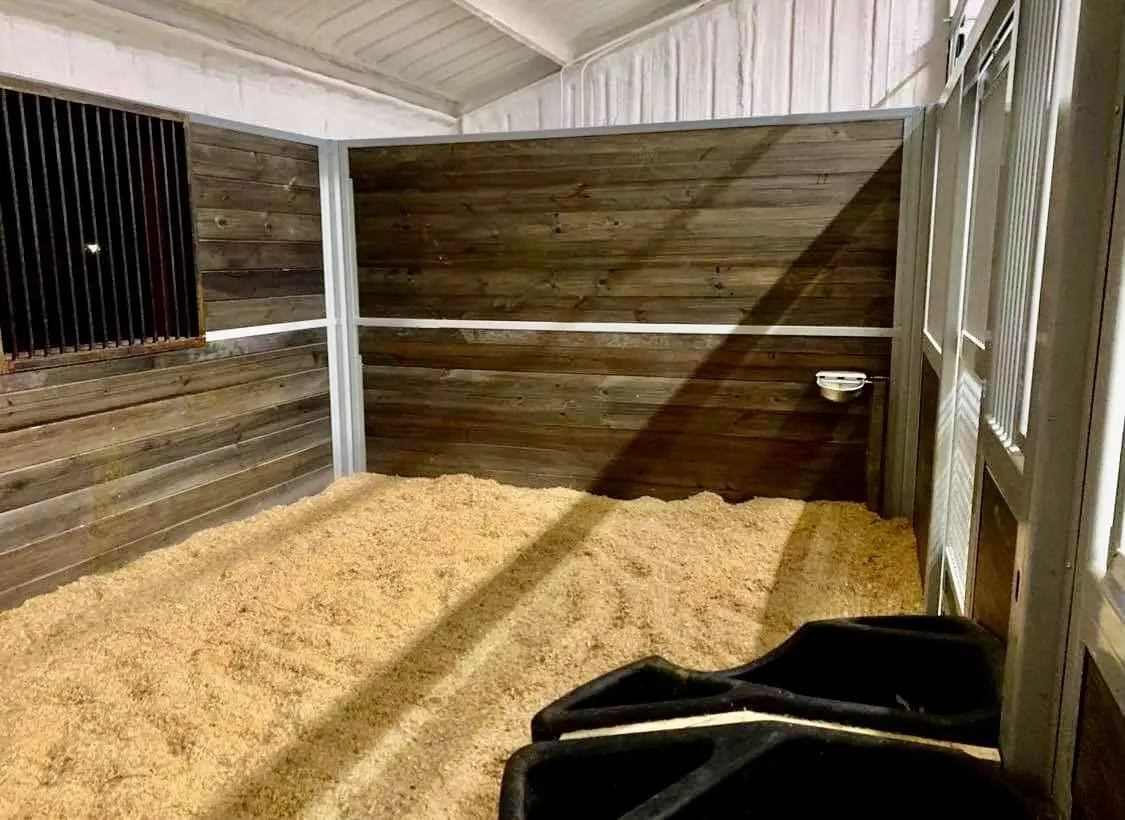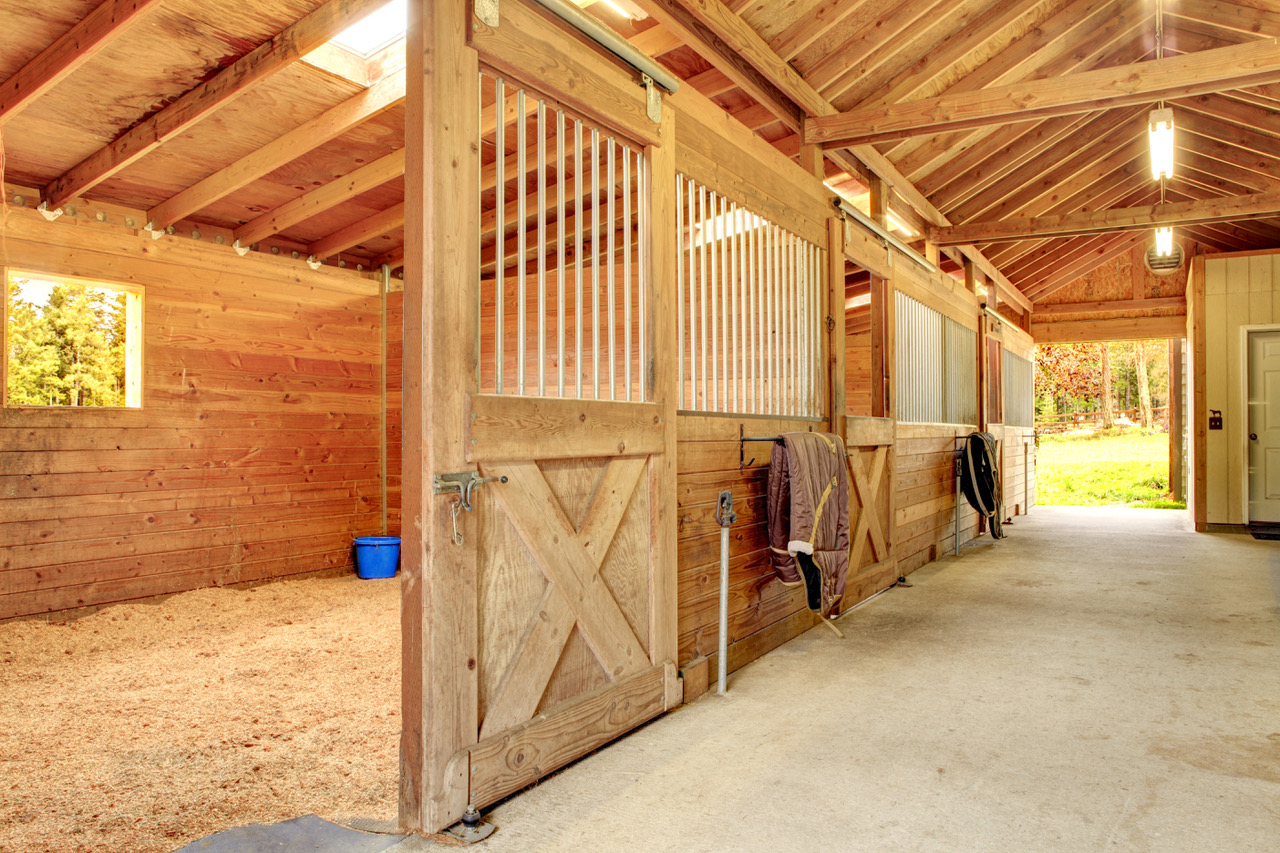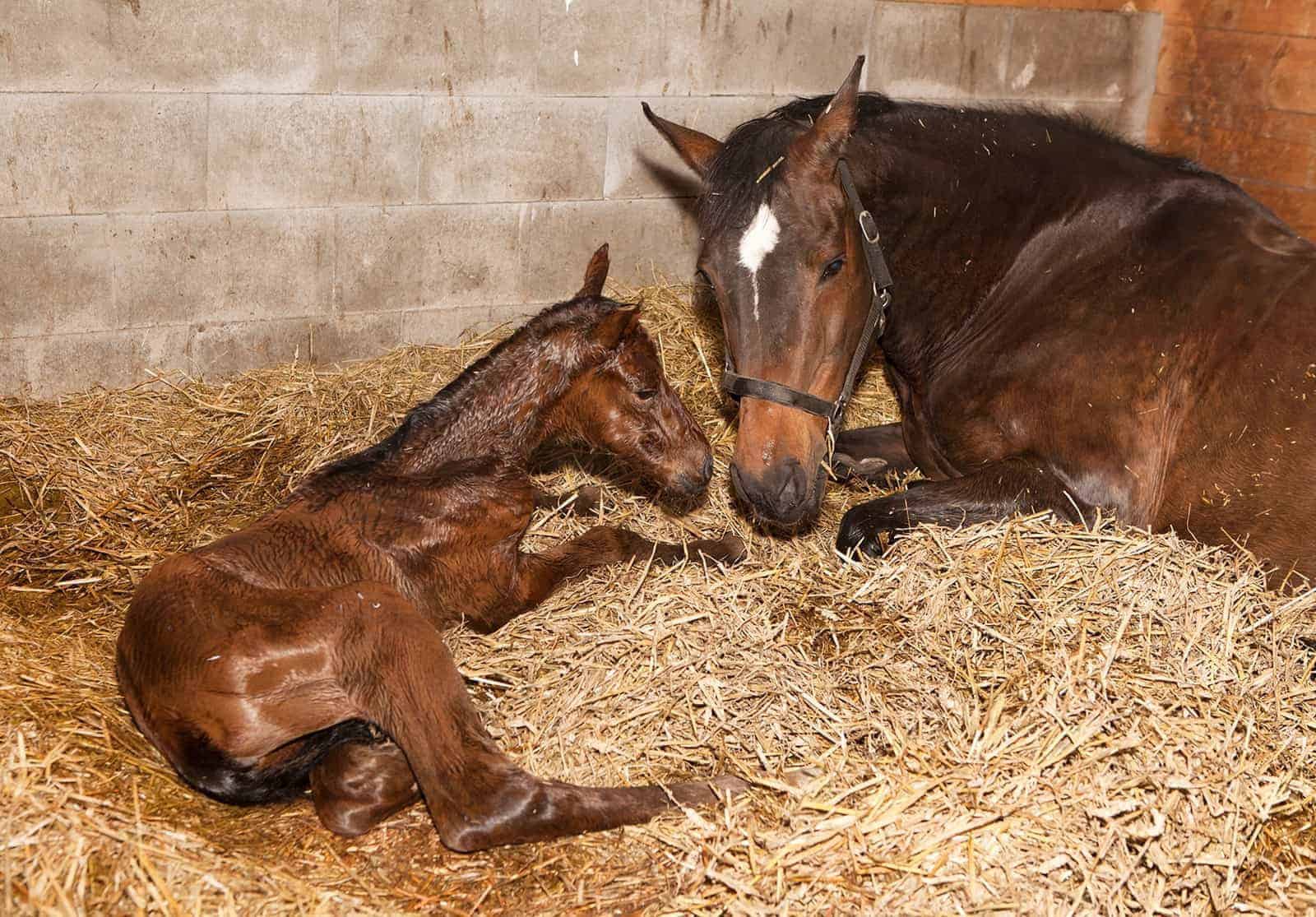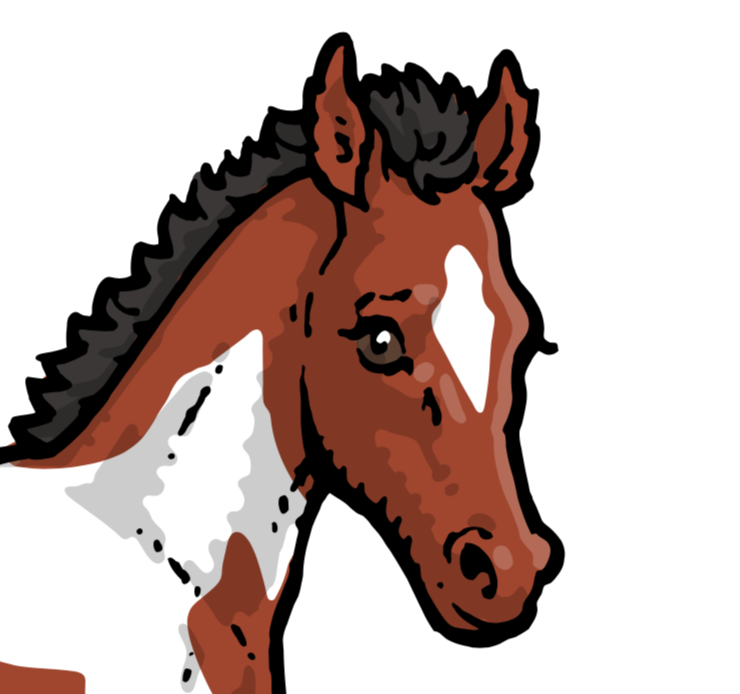Preparing The Stable
Foal and horse safety often coincide, however it is important to note that foals are far smaller, more delicate and more accident-prone than full-grown horses, meaning that foal-proofing the property is imperative in order to assure the health and safety of both the mare and foal.
The mare should have access to a larger foaling stall as she approaches her due date. Look over the stall and remove or repair any loose boards, splinters, gaps between boards or doors, where foals can get caught. Protruding nails, buckets, hooks and latches should also be removed.
In the aisle, all rakes, pitchforks, wheelbarrows and other barn equipment should be removed and kept in a secure place outside of where the meddling foal can get access. The feeders and waterers in the stable and paddock should be smooth with rounded edges and the troughs and feed bins should be made so that the foals can’t get trapped inside should they climb or fall in.
The foaling stable should be cleaned and disinfected before the mare is due to give birth in order to reduce the risk of infection and disease in the new foal. Ideally the stable should be kept empty until around when the foal is due to be born in order to reduce contact with other horses until the immune system of the foal is stronger.
If you normally use shavings, the stable bedding should be changed to foaling straw, as shavings can get stuck to the newly born foal and get into their nostrils and airways. If you prefer shavings, you can change them back after a couple days but it is important to check the foal regularly as some foals will eat them should they be given the chance.
Other options include sending the mare to a foaling specific stables, where there will be experienced staff on hand and high quality facilities. It is important to note however that moving a mare to a new property can increase stress and make the birth more difficult. It is recommended, if you have decided to pursue this option, to move the mare a few weeks before the due date so that she has time to acclimatise to her new surroundings.
Summary
- Check the larger foaling stable for nails, splinters, gaps in the boards or doors and other hazards
- Clear the aisle outside the stable of hazards such as pitchforks, rakes and wheelbarrows
- Feeding buckets and waterers should have rounded edges
- Stable should be cleaned and disinfected before birth
- Shavings should be changed to foaling straw
- Consider the option of sending your mare to a specific birthing facility or stud
Genetic Testing: Practical Horse Genetics
See more
Show me More Information or Stallion Listing.



